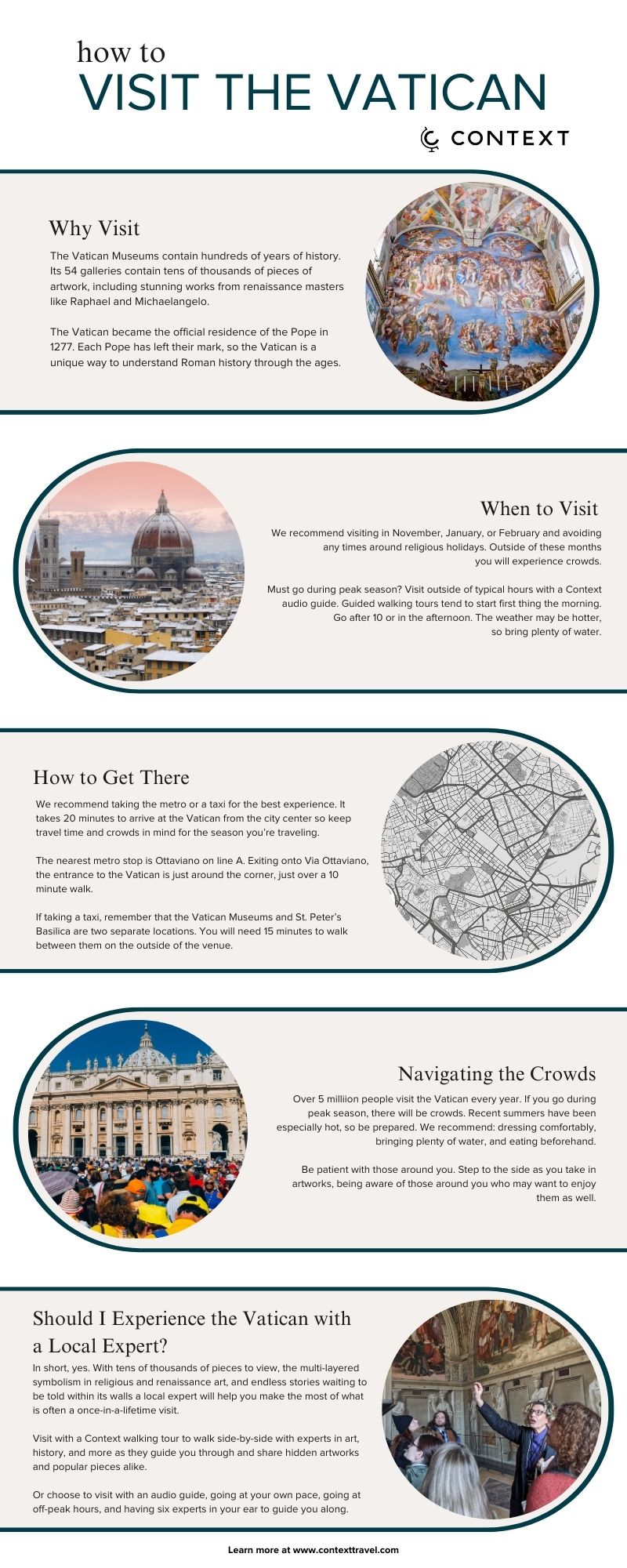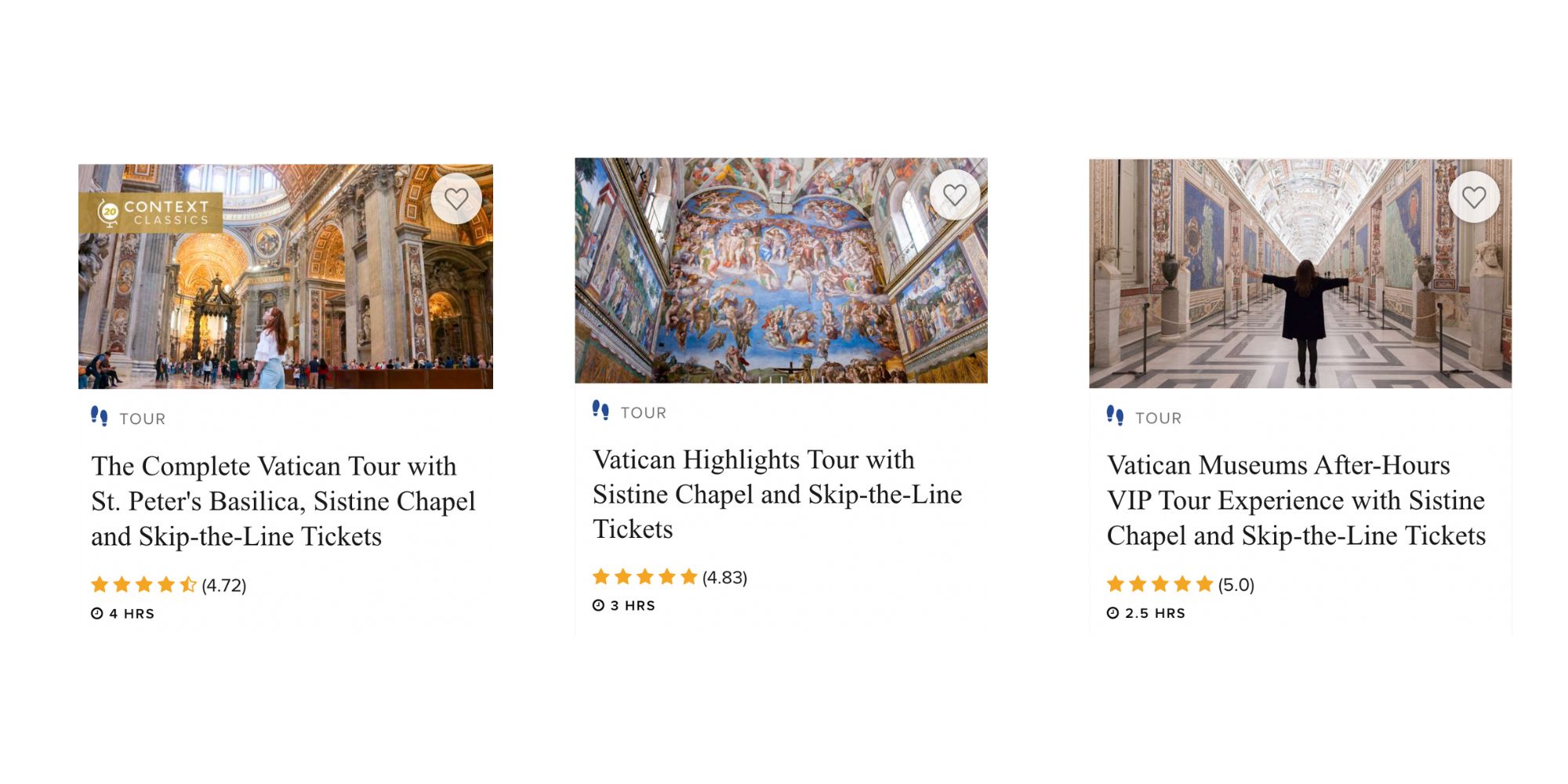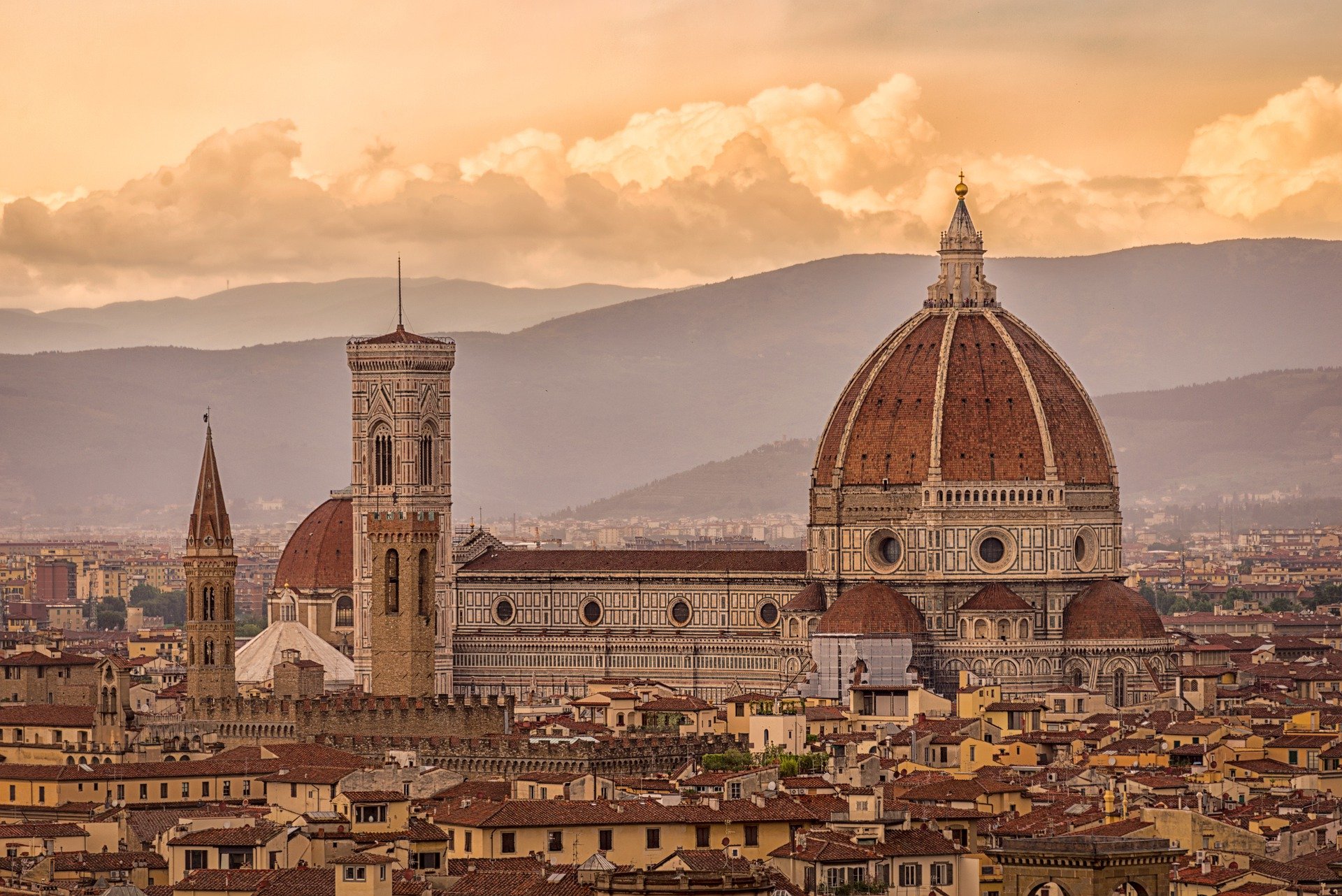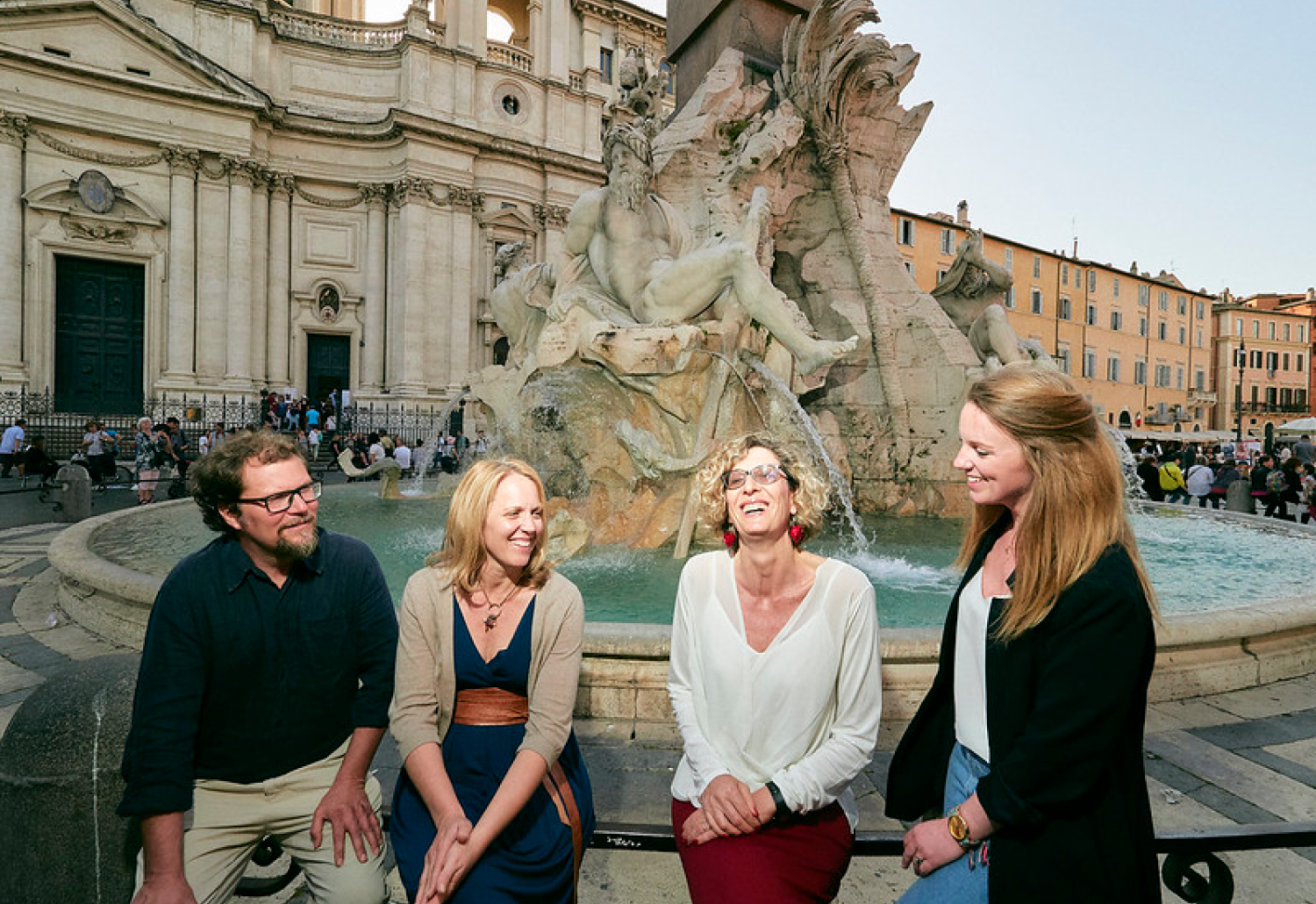Written by: Samantha McGinnis
Estimated Read Time: 7 minutes, 55 seconds
The Vatican houses one of the world’s most extensive art collections. But figuring out how to get tickets, which season is best for a visit, or which tour will help you make the most of your trip can be difficult.
Websites are often in Italian and can offer vague suggestions to make the most of your time there.
Context is here to help you prepare for a journey through these hallowed halls of artistic brilliance.
Read on. We’ll unveil secrets to making your visit to the Vatican memorable and walk you through which experiences guided by local experts will give you the best window into the un-Googleable side of this historically significant site.
Table of Contents
- Vatican History
- Planning a Visit to the Vatican
- Navigating Crowds at the Vatican
- Vatican Opening Hours
- Visit the Vatican with Context Travel
- How to Visit the Vatican: Transportation
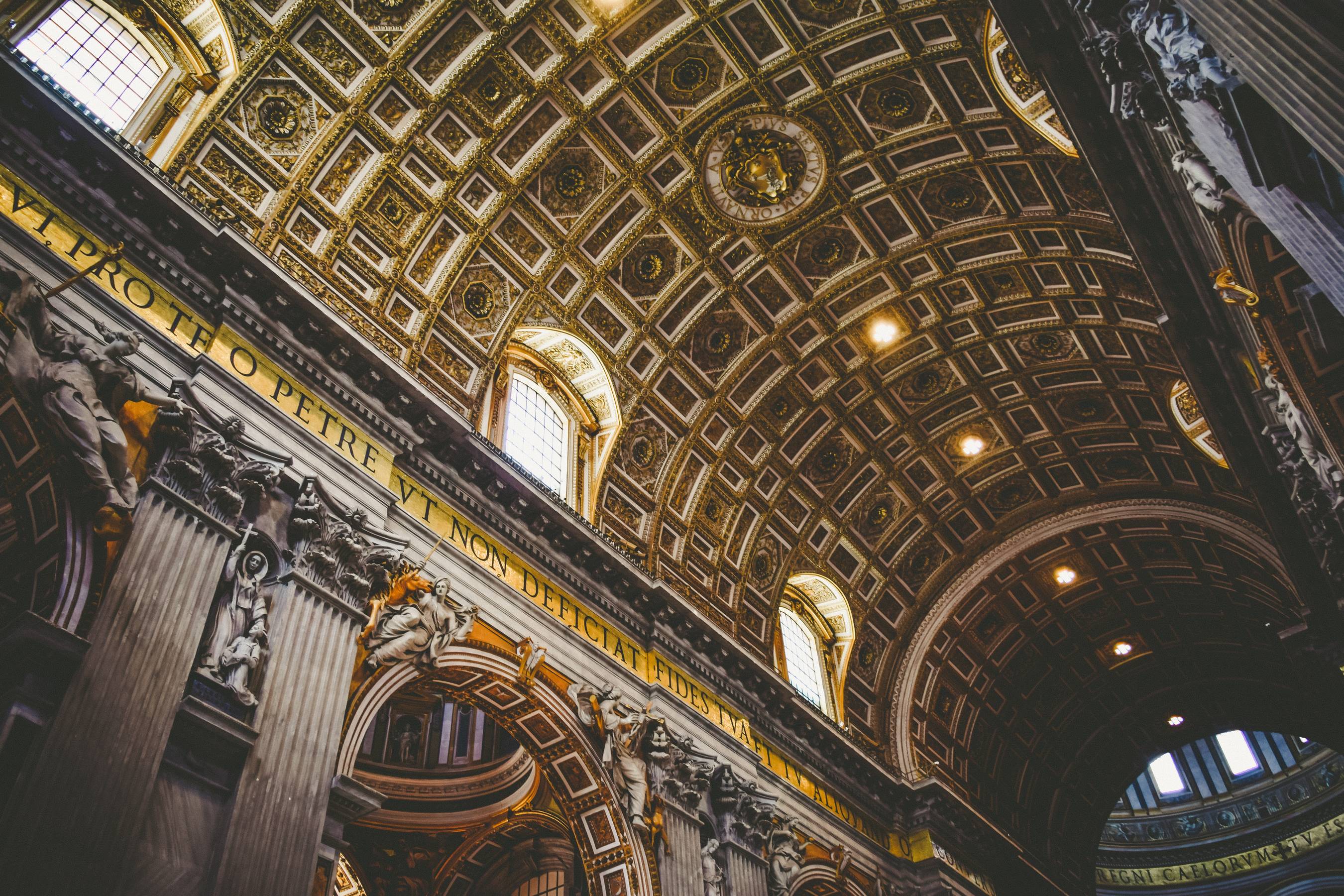
How to Visit the Vatican: Vatican History
The beginnings of the Vatican start with the martyrdom of St. Peter in 67 AD, but it wasn’t until 1277 that it became the official residence of the Papacy.
Each Pope added his own touches to the apartments, most famously in 1473 when Pope Sixtus IV commissioned the building of the Sistine Chapel and hired Perugino, Botticelli, Ghirlandaio, Rosselli, and Luca Signorelli to fresco its walls.
In 1508 Pope Julius II brought in Michelangelo to paint the famous ceiling while a young Raphael painted the frescoes of the Papal Apartments.
It was this same Pope that began the collection of antiquities, which still forms the backbone of the Vatican’s collection. More than just the seat of Catholicism, the Vatican to this day remains a repository for artistic masterpieces.
St. Peter’s Basilica started as a 4th-century church begun by Emperor Constantine the Great over the site of St. Peter’s tomb. By the 15th century, this building had fallen into disrepair, and Pope Nicholas V began plans for a new magnificent church to be built on the site of the previous one.
In the end, Julius II, who famously started the art collection, decided to demolish the old basilica and commissioned Michelangelo to design the now-famous dome.
Construction continued for more than 80 years before the dome was finished in 1590, the last year of the reign of Pope Sixtus V. The adornments in and around the Basilica continue to be added, including Bernini’s baldacchino, Cathedra Petri, and Gloria.
How to Visit the Vatican: Planning
You’ll want to start planning your trip to the Vatican in advance as tickets are limited and it is one of the most visited attractions in the world.
There are a few main things to consider when planning your trip to the Vatican:
- How long will I need to visit?
- Can I eat while at the Vatican?
- How do I get to the Vatican?
- When is the best time to visit? When is the Vatican open?
- What rules should I follow?
- How can I best navigate crowds?
- What options do I have for guided tours by local experts - and how do I pick the best one for my interests?
- How do I buy tickets if I don't book a tour or audio guide?
The Vatican is generally broken down into two distinct entities: the Vatican Museums and St. Peter’s Basilica.
While many people visit both in the same trip or tour, they are both massive sites worthy of deeper exploration.
It's worth noting that they do not necessarily open or close at the same hours and not all the tours you see will take you to both.
The Vatican Museums
The museums house the art collection within the walls of the Vatican City. More than six million people visit them annually, making it one of the most visited art museums in the world.
There are 54 galleries containing tens of thousands of objects, ranging from classical antiquities and Ancient Egyptian pieces to modern religious art. Be sure to do some research if there are any works you want to be sure to see.
The most famous is, of course, the Sistine Chapel, which is the last gallery before exiting the museum. You could easily spend days lost in the many hallways and rooms filled with masterpieces when you visit the Vatican.
How Much Time Will You Need to Visit?
You could spend days of your life in the Vatican Museums and still not see all there is to see. But for now, plan to spend at least three hours in the museums.
All Context tours are at least three hours and if you choose to explore on your own, you'll want at least that much time as well.
If you want to dig deeper, and especially if you are exploring with our audio guides, you should plan to spend the full day. If you'd like to go deeper before you arrive in Rome to make the most of your time, we recommend starting at home with our Pre-Trip Talks.
You'll want to reserve about an hour to see the Basilica, but note that while it is free, lines can be long which will add to your overall time spent there.
There is a cafe at the Vatican Museums and you can also dine at the pizzeria on site. We do recommend, especially during busy season, that you eat beforehand and bring snacks so you don't spend time waiting in the lines for food.
How to Get to the Vatican
We recommend taking the metro or a taxi for the best experience. It takes 20 minutes to arrive at the Vatican from the city center so keep travel time and crowds in mind for the season you’re traveling.
The nearest metro stop is Ottaviano on line A, which runs through Termini station. Exiting onto Via Ottaviano, the entrance to the Vatican is just around the corner, just over a 10-minute walk.If taking a taxi, remember that the Vatican Museums and St. Peter’s Basilica are two separate locations. You will need 15 minutes to walk between them on the outside of the venue. Here's how long it will take depending on where you travel from:- From Rome city center: 20 minutes. If taking a taxi keep traffic in mind.
- From the Colosseum: 35 minutes
- From Piazza Navona: 16 minutes
- From Borghese Gallery: 29 minutes
- From Termini Station: 30 minutes
When is the best time to visit? When is the Vatican open?
Please be aware that during the summer travel period, the Vatican Museums, Sistine Chapel, and St. Peter’s Basilica will have extremely high levels of visitor traffic.
It's just part of the experience! If you expect it you can be more prepared and have an overall better experience. Here are our suggestions:
Plan your visit wisely: Consider visiting during non-peak hours or choosing alternative times of the year when crowd levels tend to be lower. Mondays and Wednesdays experienced the highest levels of crowds during the Summer 2023 season. During these peak times, there may be raised voices from security guards as they try to control the crowds.
Visit with an audio guide: Context's tours and other guided tours begin at specific times, usually first thing in the morning. If you want more flexibility and while avoiding some of the crowds, you can visit outside of typical hours with the Context Vatican Museums audio guide.
Since guided walking tours tend to start first thing the morning, consider going with your audio guide after 10 AM or in the afternoon. Skip over some of the more crowded spots or view them quickly. Stop for lunch without worrying about cutting into your tour time.
Buy a skip-the-line tour, or buy tickets in advance if you're not on a tour: What does skip-the-line mean? We've detailed this for you here so you can better understand the experience you'll have once you're there.
Patience and understanding: Remember, everyone is there to enjoy their time and take in the incomparable sites at the Vatican and St. Peter's Basilica. Please be patient with those around you.
If it's busy season it will be hot. It will be crowded. Be considerate of those around you and move to the side when you've had your turn to enjoy a piece. Leave space.
Our guides will do their utmost to make your tour as enjoyable as possible, but some elements are beyond their control.
Comfortable attire and footwear: You will spend a significant amount of time standing and walking. Wear comfortable clothing and sturdy shoes to ensure your comfort during your experience. Several of the halls within the Vatican do not have air conditioning; it can be useful to pack a fan.
Water and food: Plastic and reusable water bottles are allowed in the Vatican, so you'll want to bring plenty of water. Bring snacks and eat before your tour. You'll be energized and won't have to wait in line for food or water, which means you can spend more time in the galleries and the church itself. This is especially true if you're traveling with kids.
Tips for St. Peter's Basilica: If you're visiting St. Peter's Basilica on your own or with an audio guide, you do not need tickets. Entry is free, but expect to wait in long security lines.
A tip for groups: You can take turns standing in line, but once you enter the metal gate others may not join you.
If you'd like to climb the dome, you can buy tickets on site the day of your visit. They are not available online. The dome closes one hour before the Basilica.
Vatican Opening Hours
To visit the Vatican, the museums are open from 9:00 a.m. to 6:00 p.m. Monday through Saturday with final entry at 4:00 p.m.. From May 5 to October 28, Friday hours extend to 10:30 p.m. with final entry at 8:30 p.m. and Saturday hours extend to 8:00 p.m. with final entry at 6:00 p.m.
Every last Sunday of the month hours are 9:00 a.m. to 2:00 p.m. with final entry at 12:30 p.m.
However, those wondering how to visit the Vatican should note that tour operators are allowed in earlier in the day. It is best to visit either first thing in the morning, with the 8:30 AM start time being ideal if you are touring, or early in the afternoon (around 1:30 p.m.) when it tends to clear out a bit after lunch.
Keep in mind that museums are closed for all major Catholic holidays, so it is best to check your trip dates against the religious calendar if you wish to include the Vatican. Tickets to the museum cost 17 EUR for adults, and 8 EUR for anyone under 18 years old. There will be additional fees for "skip-the-line" admission tickets.
St. Peter’s Basilica is open to the public from 7:00 a.m. to 7:00 p.m. in the late spring and summer, and 7:00 a.m. to 6:00 p.m. in the fall and winter. It is free to enter the main Basilica, though there are fees for some of the other sites within the church.
Please Note: St Peter's Basilica is closed on Wednesdays as the Papal audience is held on these days. Context does not operate our signature Arte Vaticana tour on Wednesdays.
Visit the Vatican with Context Travel
Context offers seven distinct ways to experience the Vatican and St Peter’s Basilica. Each is designed and led by local experts who tell you the stories behind the famous and lesser-known works of art, buildings, and histories of the Vatican.
Whether you’re traveling with your family, want to join a group of other solo travelers, or are searching for exclusive after-hours access, we have a tour for you.
But with so many experiences, which one is right for you? We’ve outlined them to make this decision easier for you, and our global team is always standing by to answer your questions if you’re having a difficult time deciding.
- Arte Vaticana with Skip the Line Tickets – This four hour seminar explores the collections of the Vatican Museums, including the Sistine Chapel and St. Peter’s Basilica, in the company of an art historian or theologian. Together, you will explore the relationship between art and religion throughout the centuries.
- Vatican Museum Highlights – This in-depth exploration of the Vatican Museums lasts 3 hours and includes the Sistine Chapel. It is a shorter version of the Arte Vaticana tour skipping St. Peter’s in favor of a greater depth to survey the art collections of the Vatican.
- St. Peter’s Tour – Our comprehensive tour of St. Peter’s Basilica spends 3 hours looking at the architecture, art, and religious significance of this famous church.
- Vatican Museum Tour for Kids – A 3-hour walk that provides children with a basic introduction to art and religion without overtaxing anyone’s patience.
- After Hours Vatican Tour - Explore the Vatican for 2.5 hours with an art historian when the Vatican is closed to the public with this exclusive private experience, only offered 4-5 times per year. No lines, no waiting.
Visiting the Vatican: How do I buy tickets if I don't buy a tour or want to do an audio guide?
This can be a difficult question to answer. Tons of tour operators will appear when you search for Vatican tickets and some sites are in Italian. We have a few tips to make this easier.
First, only buy tickets from the official Vatican website. Do not buy them from re-sellers as you cannot ensure their validity.
Plan ahead. You should buy your tickets to Vatican shortly after you purchase your flight for your trip. They sell out quickly and if you want to ensure a specific date and time, you'll want to get them well in advance.
We highly recommend one of Context's Vatican audio guides if exploring without an in-person guide to get the most out of your tour. The sheer volume of history, objects, artwork and symbolism throughout the venues warrants a guide to help you understand the magnitude of all you see.
